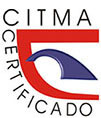Stories under an identical name: social representations of gender violence in Latin American cinema
Keywords:
social representations of gender violence, social mediations, social asymmetry, Latin American cinema, verisimilitudeAbstract
The objective of this study is to analyze the representations of violence as social asymmetry and its social mediations, based on two female characters from the films Maria full of grace and Ixcanul. For this, the qualitative content analysis and the Atlas ti program were used. The results obtained show that the films reveal the multi-conditionality of mediations that exacerbate Latin American women’s vulnerability to violence. The verisimilitude of these images with these societies is a relevant question given the connotation that these representations have in the configuration of the social perception of reality.
Downloads
References
ALONSO, J ET AL (2016). De lo superficial a lo esencial. Lo comunitario en las prácticas culturales. La Habana: Juan Marinello.
BENÍTEZ, G. J., GUERRERO, J., SANTACRUZ, M., ARANDIA, M., CUADROS, L. & DÍAZ, J. (2017). Voces actuales en el fenómeno de pasantes de drogas ilícitas en Colombia. Revista Criminalidad, 59 (3): 125-139.
CARRIÓN, F. (2009). Historia y violencia: una necesaria deconstrucción. Revista Latinoamericana de Seguridad ciudadana, (7): 7–13.
CARRIÓN, F.; IMBUSCH, P. Y MISSE, M. (2011). Violence Research in Latin America and the Caribbean: A Literature Review. International Journal of Conflict and Violence, 5 (1) (January): 87–154.
CARRIÓN, F Y PINTO J.P. (2017). Violencias, articulaciones delictivas y gobierno de la seguridad en el Ecuador del siglo XXI. En: La política en la violencia y lo político de la seguridad. FLACSO Ecuador.
CEPAL. (2016). La matriz de la desigualdad social en América Latina.
CEPAL. (2019). Panorama Social de América Latina 2019. Comisión Interamericana para el Control del Abuso de Drogas (CICAD-OEA). (2013). El problema de las drogas en las Américas.
FLICK, U. (2014). The SAGE Handbook of Qualitative Data Analysis. SAGE Publications.
GUANUMEN, M. (2012). La narcotización de las relaciones Colombia-Estados Unidos. Revista De Relaciones Internacionales, Estrategia y Seguridad, 7(2): 221-244.
KRUG, E. G., DAHLBERG, L. L., MERCY, J. A., & ZWI, A. B. (2003). Informe mundial sobre la violencia y la salud. OMS.
Latinobarómetro Corporation. (2019). Informe 2000-2018.
MARTINS, I. (2011). Violencia y Cine: percepción y comprensión por los jóvenes. Revista Austral de Ciencias Sociales. 20: 5-18.
MENDOZA, C.P. Y PALACIOS, L. Z. (2018). Embarazo en adolescentes de América Latina y el Caribe: Características sociodemográficas y de sus familias. Tesis de pregrado de Psicología de la Facultad de Psicología de la Universidad Cooperativa de Colombia, Sede Santa Marta.
PEREA-RESTREPO, C. M. (2015). Vislumbrar la paz: conflictos en la ciudad latinoamericana. Colombia: IEPRI, Debate, Universidad Nacional de Colombia.
QUIÑIMIL, D. (2015). Violencias coloniales y patriarcales contra mujeres indígenas latinoamericanas. GUAJARDO, G. Y RIVERA, C. (Eds.) Violencias contra las mujeres. Desafíos y aprendizajes en la Cooperación Sur-Sur en América Latina y el Caribe. Santiago, Chile: Serie Libros FLACSO-Chile.
RIVERO, R. (2009). Reflexiones sobre Género. Santa Clara: Editorial Feijóo.
Save the Children. (2018). Violencia contra adolescentes en América Latina y el Caribe. Oficina Regional para América Latina y El Caribe: Ciudad Panamá.
SMITH, K. (2009). Guatemala City: Hunger Protests amid Allegations of Child Kidnapping and Adoption Fraud.
Downloads
Published
How to Cite
Issue
Section
License

This work is licensed under a Creative Commons Attribution-NonCommercial 4.0 International License.
Usted es libre de:
Compartir — copiar y redistribuir el material en cualquier medio o formato
Adaptar — remezclar, transformar y construir a partir del material
La licenciante no puede revocar estas libertades en tanto usted siga los términos de la licencia
Bajo los siguientes términos:
Usted es libre de:
Atribución — Usted debe dar crédito de manera adecuada, brindar un enlace a la licencia, e indicar si se han realizado cambios. Puede hacerlo en cualquier forma razonable, pero no de forma tal que sugiera que usted o su uso tienen el apoyo de la licenciante.
NoComercial — Usted no puede hacer uso del material con propósitos comerciales.
No hay restricciones adicionales — No puede aplicar términos legales ni medidas tecnológicas que restrinjan legalmente a otras a hacer cualquier uso permitido por la licencia.



















